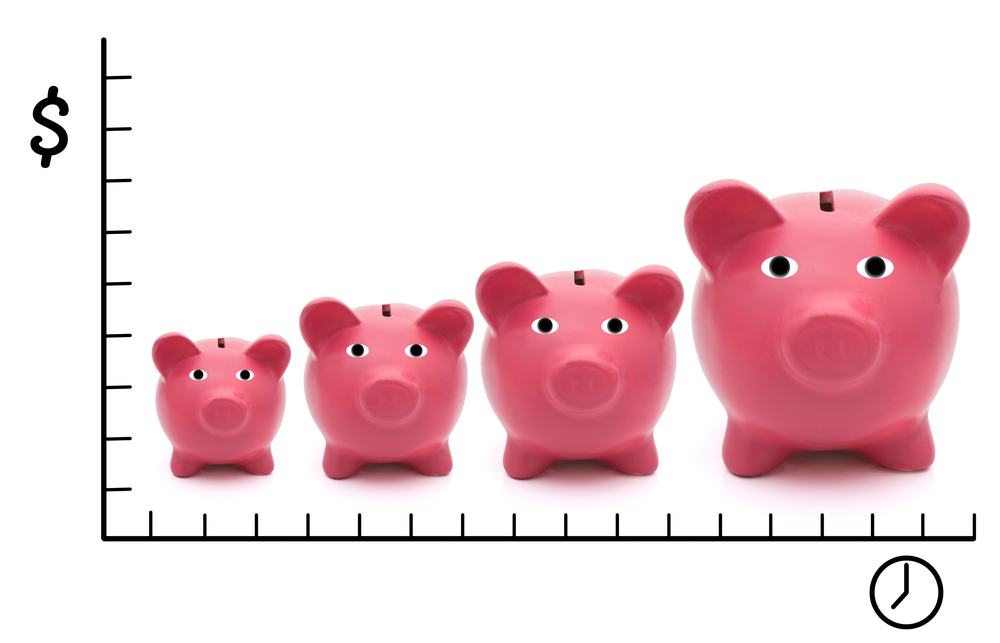Compound Interest
Definitions and Basics
Interest, from the Concise Encyclopedia of Economics
Interest is the price people pay to have resources now rather than later. Resources, of course, can be anything from college tuition to a big-screen TV. Interest is conventionally expressed as a percentage rate for a period of one year. If borrowers (those who want resources now) can obtain the resources from lenders (those who are willing to surrender current control) on the condition that they return 103 percent of the resources one year later, then the interest rate is 3 percent….
Growing Money, No-Frills Money Skills, Federal Reserve Bank of St. Louis
Calculate how much you’ll save: Formulas and Examples to Calculate Interest on Savings, from Banking.About.com
As you build up your savings, it’s helpful to learn how to calculate interest. Doing so allows you to plan for important goals and understand your progress towards those goals. It’s relatively easy to calculate the interest you earn, especially if you use free spreadsheets or online calculators….
Rule of 72: EconomicGrowth, from the Concise Encyclopedia of Economics
In the modern version of an old legend, an investment banker asks to be paid by placing one penny on the first square of a chess board, two pennies on the second square, four on the third, etc. If the banker had asked that only the white squares be used, the initial penny would double in value thirty-one times, leaving $21.5 million on the last square. Using both the black and the white squares makes the penny grow to $92,000,000 billion….
You can figure out how long it takes income to double by dividing the growth rate into the number 72. If growth in the United States continues at the annual rate of 2.1 percent, income per capita will double every 34 years (72/2.1 = 34). In 102 years, income will increase eightfold. This increase is large, but not unprecedented….
In the News and Examples
Lottery payments: Present Value, from the Concise Encyclopedia of Economics
Present value is the value today of an amount of money in the future. If the appropriate interest rate is 10 percent, then the present value of $100 spent or earned one year from now is $100/1.10, which is about $91. This simple example illustrates the general truth that the present value of a future amount is less than that actual future amount. If the appropriate interest rate is only 4 percent, then the present value of $100 spent or earned one year from now is $100/1.04, or about $96. This illustrates the fact that the lower the interest rate, the higher the present value. The present value of $100 spent or earned twenty years from now is, using an interest rate of 10 percent, $100/(1.10)20, or about $15. In other words, the present value of an amount far in the future is a small fraction of the amount….
The concept of present value is very useful. One interesting use is to determine what a lottery prize is really worth. The California state government, for example, advertises that one of its lottery prizes is $1 million. But that is not the value of the prize. Instead, the California government promises to pay $50,000 a year for twenty years. If the discount rate is 10 percent and the first payment is received immediately, then the present value of the lottery prize is only $468,246….
Robert Skidelsky on Money, the Good Life, and How Much is Enough, EconTalk podcast episode, October 2012.
Robert Skidelsky, noted biographer of John Maynard Keynes and author (with his son Edward) of the recently published How Much is Enough, talks with EconTalk host Russ Roberts about materialism, growth, insatiability, and the good life. Skidelsky argues that we work too hard and too long. He argues that the good life has more leisure than we currently consume and that public policy should be structured to discourage work in wealthy countries where work can still be uninspiring. Skidelsky criticizes the discipline of economics and economists for contributing to an obsession with growth to the detriment of what he says are more meaningful and life-enhancing policy goals.
Robert Frank on Inequality, EconTalk podcast episode, November 2010
Robert Frank of Cornell University talks with EconTalk host Russ Roberts about inequality. Is there a role for public policy in mitigating income inequality? Is such intervention justified or effective? The conversation delves into both the philosophical and empirical evidence behind differing answers to these questions. Ultimately, Frank argues for a steeply rising tax rate on consumption that would reduce disparities in consumption. This is a lively back-and-forth about a very timely topic.
A Little History: Primary Sources and References
Defence of Usury, by Jeremy Bentham on Econlib
Advanced Resources
The Miracle of Compound Returns, at Marginal Revolution University
The Theory of Interest, by Irving Fisher on Econlib

